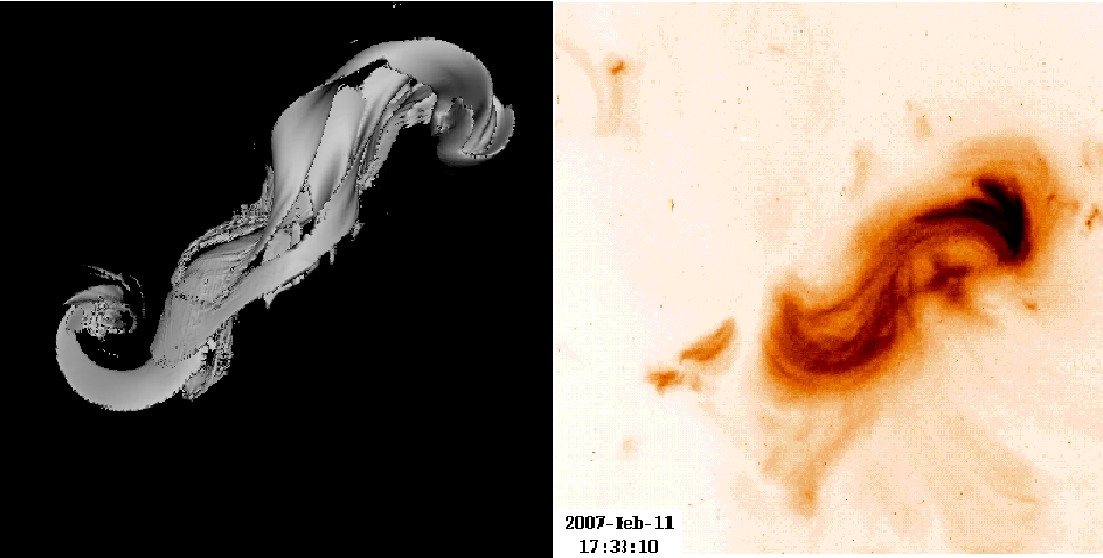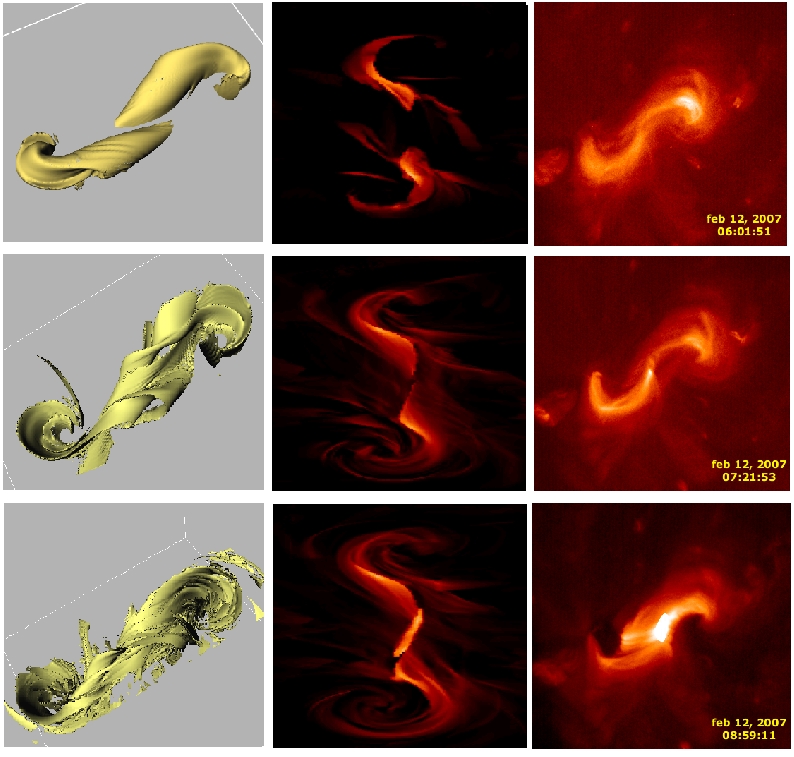|
|
VASILIS ARCHONTIS
|
|
Coronal Sigmoids
|
Numerical simulations and observations
of coronal
sigmoids.
The results of our numerical experiments on the formation and evolution of
coronal sigmoids appear in the Astrophysical Journal, Volume 691, Issue 2, pp. 1276-1291 (2009).
This model is able to explain how complex sigmoids
are formed and evolve and how are connected to eruptive events of the solar corona.
Click here if you
want to download a copy of the paper (pdf file).
|

|
Figure 1. The left panel
shows one snapshot from the numerical experiments and the right panel
shows the 'corresponding' snapshot from the observations (as recorded by Hinode mission). The two
figures show the 'internal complex structure' of the solar sigmoid,
which has been observed with very high resolution and it is reproduced
succesfully by our numerical experiments. As you can see, 'sigmoids'
consist of a netwrok of thin 'ribbons' where the electric current is
strong (the isosurfaces in the left panel show electric current) and
thus, the plasma is heated to 1-2 million Kelvin degrees temperature.
As you can see, there is a very good agreement between the observations
and the numerical experiments.
Credit:
Hinode is a Japanese mission developed and launched by ISAS/JAXA, with NAOJ as domestic partner and NASA and STFC (UK) as international partners. It is operated by
these agencies in co-operation with ESA and the NSC (Norway). AS, LG and ED were supported by NASA contract NNM07AB07C.
|

|
Figure 2. This figure shows the time evolution and final eruption of the
sigmoid. It consists of three columns (time is running from top to bottom). Columns
1 and 2 show results from numerical experiments. The yellow isosurfaces
are surfaces of electric current (left panels). Column 2 (middle panels)
shows temperature. Column 3 shows 'temperature' (intensity) as it is
recorded by the observations (Hinode mission). Notice that the agreement on the shape of
the sigmoid, internal structure and thermal distribution along the sigmoid,
between numerical experiments and observations is very good and fairly
balanced. Notice, that even the 'flaring' episode (flashing) at the
middle of the sigmoid at the down-right snapshot from observations is
reproduced exceptionally well by our numerical experiments (down-middle).
Credit:
Hinode is a Japanese mission developed and launched by ISAS/JAXA, with NAOJ as domestic partner and NASA and STFC (UK) as international partners. It is operated by
these agencies in co-operation with ESA and the NSC (Norway). AS, LG and ED were supported by NASA contract NNM07AB07C.


